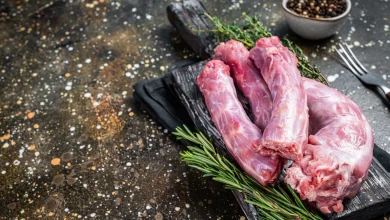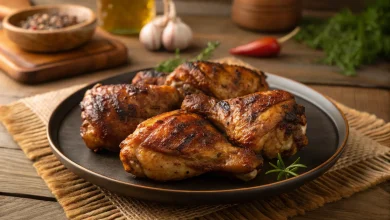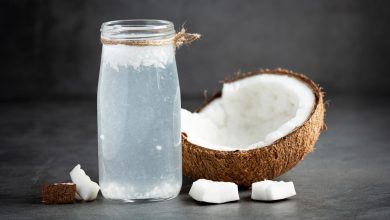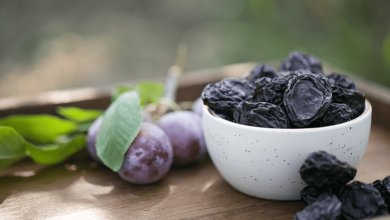Introduction
In the realm of culinary delights, few ingredients offer the combination of lean protein, rich flavor, and versatility as effectively as beef, particularly when sourced from premium regions like New Zealand. This specific cut, known as beef flank, is renowned for its tenderness when cooked with care, especially through slow braising methods that unlock its full potential. As a lean, flavorful, and nutrient-dense option, it appeals to a broad spectrum of dietary preferences, including high-protein, low-carb, paleo, and gluten-free diets. At Love With Recipes, we emphasize not only the deliciousness of this beef but also its health benefits, making it a perfect centerpiece for hearty stews, flavorful wraps, or simply served alongside a colorful array of vegetables. The following comprehensive guide will walk you through every aspect of preparing, cooking, storing, and enhancing this exceptional ingredient, ensuring your culinary experience is both delightful and educational.
Time
The total time required for preparing this braised NZ imported flank beef encompasses initial preparation, cooking, and resting periods. It is a slow-cooked process, designed to maximize tenderness and flavor extraction.
- Preparation Time: 20 minutes
- Cooking Time: 2 to 3 hours
- Resting Time: 10 minutes
- Total Estimated Time: 2 hours 30 minutes to 3 hours 30 minutes
Needed Equipment
To achieve optimal results, ensure your kitchen is equipped with the following tools and appliances:
- Heavy-bottomed Dutch oven or braising pot: For even heat distribution and slow cooking.
- Sharp chef’s knife: For trimming and slicing the beef.
- Cutting board: Preferably wooden or plastic, for safe meat handling.
- Measuring cups and spoons: To accurately measure liquids and seasonings.
- Kitchen thermometer: To check internal meat temperature if desired.
- Aluminum foil or lid: To cover while braising and retain moisture.
- Large spoon or ladle: For stirring and serving.
- Kitchen tongs: For handling hot meat and vegetables.
- Kitchen timer: To keep track of cooking duration.
- Optional: immersion blender or food processor: For making sauces or purees from braising liquid.
Tags
This recipe fits into several culinary categories, making it adaptable for various dietary needs and preferences:
- Beef
- Lean meat
- Braising
- High-protein
- Low-carb
- Paleo
- Gluten-free
- Slow-cooked
- Healthy
Serving Size
This recipe yields approximately 4 servings, with each serving providing a hearty, protein-rich portion suitable for a main course paired with vegetables or grains.
Difficulty Level
The level of difficulty for preparing this dish is moderate. While braising requires some patience and attention to detail, it is straightforward enough for home cooks with basic culinary skills. The key is maintaining a low, consistent cooking temperature and monitoring the meat’s tenderness.
Allergen Information
This product contains no common allergens such as gluten, dairy, nuts, or soy. However, individuals with beef sensitivities or allergies should refrain from consuming this dish. Cross-contamination during processing is unlikely but always check labels for any specific allergen warnings.
Dietary Preference
This beef cut aligns with several dietary preferences, making it an excellent choice for health-conscious consumers:
- High in Protein: Supports muscle growth, repair, and satiety.
- Low Carb: Contains zero carbohydrates, ideal for ketogenic and diabetic diets.
- Low Sugar: No sugar content enhances its suitability for sugar-restricted plans.
- Paleo-Friendly: As a natural, unprocessed animal source, it fits within paleo guidelines.
- Gluten-Free: Naturally free of gluten, safe for celiac disease sufferers.
Course
This dish is best classified as a main course, suitable for dinner or a substantial lunch. Its hearty nature makes it a satisfying centerpiece for a family meal or a special occasion.
Cuisine
By virtue of its origin and cooking style, this recipe is rooted in New Zealand cuisine, which emphasizes quality meats, fresh ingredients, and slow cooking techniques that enhance natural flavors.
Ingredients
Ingredients Table
| Ingredient | Quantity | Notes |
|---|---|---|
| NZ Imported Flank Beef (Lean, Cooked, Braised) | 2 pounds (900 grams) | Trimmed of excess fat before cooking |
| Olive Oil | 2 tablespoons | For searing and sautéing |
| Onion | 1 large, diced | Yellow or white onion works well |
| Garlic | 4 cloves, minced | Fresh garlic enhances flavor |
| Carrots | 3 medium, sliced | Optional, for sweetness and color |
| Celery | 3 stalks, sliced | For depth of flavor |
| Tomato Paste | 2 tablespoons | Concentrated flavor enhancer |
| Red Wine (or Beef Broth) | 1 cup | Optional, for braising liquid |
| Beef Broth (Low Sodium) | 2 cups | For braising |
| Fresh Thyme | 2 sprigs | Optional but highly recommended |
| Bay Leaves | 2 leaves | Enhances aroma and flavor |
| Salt and Pepper | To taste | Adjust seasoning as needed |
Instructions
Preparation Phase
Begin by preparing your ingredients meticulously. Trim any excess fat from the beef to ensure a lean final dish. Pat the meat dry with paper towels to facilitate browning. Dice the onion, slice the carrots and celery, and mince the garlic. Having all ingredients prepped and measured before commencing cooking ensures a smooth process.
Searing the Beef
- Heat the olive oil in a heavy-bottomed Dutch oven over medium-high heat until shimmering. Once hot, carefully place the beef in the pan, avoiding overcrowding—work in batches if necessary.
- Sear the beef on all sides until a rich brown crust forms, approximately 4-5 minutes per side. This Maillard reaction locks in flavor and creates a desirable texture.
- Once seared, transfer the beef to a plate and set aside.
Sautéing Vegetables
- In the same pot, add a bit more olive oil if needed, then add diced onions, carrots, and celery.
- Sauté over medium heat for about 7-10 minutes until vegetables are tender and onions are translucent.
- Add minced garlic and cook for an additional 1-2 minutes, stirring constantly to prevent burning.
Building the Braising Liquid
- Stir in the tomato paste, cooking for 1-2 minutes to deepen its flavor.
- Deglaze the pan with red wine, scraping the browned bits from the bottom with a wooden spoon. Allow the wine to reduce slightly for about 3-4 minutes.
- Add the beef broth, thyme sprigs, bay leaves, salt, and pepper. Stir to combine.
Braising the Beef
- Return the seared beef to the pot, submerging it partially in the liquid.
- Bring to a gentle simmer over medium heat, then reduce the heat to low.
- Cover with a tight-fitting lid and cook for 2.5 to 3 hours. Occasionally check to ensure the liquid doesn’t evaporate completely; add more broth if necessary.
- During cooking, the beef will become tender, and flavors will meld beautifully.
Finishing and Serving
- Once cooked, remove the beef and let it rest for about 10 minutes before slicing thinly against the grain.
- Optional: For a thicker sauce, remove the beef and blend the braising liquid with an immersion blender or reduce over high heat until desired consistency is achieved.
- Serve slices of beef alongside vegetables, over mashed cauliflower, or with roasted sweet potatoes for a complete meal.
Preparation Tips
- Always pat the beef dry before searing to achieve a perfect crust.
- Use fresh herbs where possible; they impart a more vibrant flavor.
- Maintain a low simmer during braising to prevent the meat from becoming tough or dry.
- Rest the beef after cooking to allow juices to redistribute, ensuring each slice remains moist.
- Adjust seasoning at the end; taste and add salt, pepper, or herbs as needed.
Nutritional Information
| Nutrient | Amount per 100g |
|---|---|
| Energy | 208 kcal |
| Protein | 30.13 g |
| Total Fat | 9.73 g |
| Saturated Fat | 3.57 g |
| Carbohydrates | 0.0 g |
| Dietary Fiber | 0.0 g |
| Sugar | 0.0 g |
| Calcium | 5.0 mg |
| Iron | 2.36 mg |
| Magnesium | 18 mg |
| Phosphorus | 139 mg |
| Potassium | 190 mg |
| Sodium | 28 mg |
| Zinc | 6.73 mg |
| Copper | 0.065 mg |
| Manganese | 0.011 mg |
| Selenium | 5.4 mcg |
| Vitamin C | 0.0 mg |
| Vitamin B12 | 1.38 mcg |
Tips and Tricks
- For an even richer flavor, marinate the beef in herbs and spices overnight before searing.
- If you prefer a smokier flavor, add a touch of smoked paprika or chipotle powder during seasoning.
- Use a meat thermometer to ensure the beef reaches an internal temperature of about 195°F (90°C) for maximum tenderness.
- Leftover braised beef can be shredded and used in tacos, salads, or sandwiches.
- Enhance the sauce by adding a splash of balsamic vinegar or Worcestershire sauce during reduction.
Add-ons
Enhance your meal with various add-ons to elevate the dining experience:
- Roasted vegetables: Brussels sprouts, parsnips, or sweet potatoes.
- Fresh herbs: Parsley, cilantro, or basil for garnish.
- Grains: Serve over quinoa, brown rice, or wild rice for added texture.
- Cheese: Crumbled feta or blue cheese can add a salty tang.
- Pickled vegetables: For a tangy contrast.
Side Dishes
This tender, flavorful beef pairs beautifully with a range of side dishes that complement its richness:
- Steamed or roasted seasonal vegetables
- Cauliflower mash or mashed sweet potatoes
- Fresh green salads with vinaigrette
- Grilled asparagus or zucchini
- Whole grain or gluten-free bread
Improvements
To elevate this dish further, consider the following enhancements:
- Inject a smoky element by adding smoked paprika or chipotle during seasoning.
- Introduce a touch of sweetness with caramelized onions or a drizzle of honey during the final stages of cooking.
- Use homemade beef stock to intensify flavor.
- Finish with a splash of aged balsamic vinegar or a squeeze of fresh lemon to add brightness.
- For a richer sauce, stir in a pat of butter or a splash of cream just before serving.
Save and Store
Proper storage and reheating are essential to preserve flavor and texture:
- Refrigeration: Store leftovers in an airtight container for up to 3 days.
- Freezing: Freeze in portions for up to 3 months. Use airtight, freezer-safe containers or vacuum-sealed bags.
- Reheating: Gently reheat on the stove over low heat, adding a splash of broth or water to prevent drying out.
- Reconsistency: For leftovers, consider shredding the beef and simmering it in extra sauce for moisture.
FAQ
Can I use a different cut of beef for braising?
Yes, cuts like chuck roast, brisket, or short ribs can also be used. However, flank steak is leaner and cooks faster, making it ideal for quick braising. Adjust cooking times accordingly.
Is it necessary to marinate the beef beforehand?
Marinating is optional but recommended if you want to infuse additional flavors. A simple marinade with herbs, garlic, and olive oil overnight can enhance tenderness and taste.
Can I make this dish in a slow cooker?
Absolutely. After searing the beef and sautéing vegetables, transfer everything to a slow cooker. Cook on low for 6-8 hours or until the meat is tender.
What are suitable substitutes for red wine?
If you prefer not to use alcohol, substitute with additional beef broth or a splash of balsamic vinegar mixed with water.
How can I make the sauce thicker?
Reduce the braising liquid over high heat or whisk in a slurry of cornstarch or arrowroot powder mixed with cold water. Simmer until thickened.
Conclusion
This comprehensive guide to preparing NZ imported lean flank beef braised to perfection underscores its versatility, health benefits, and rich flavor profile. Whether you are aiming for a comforting stew, a protein-packed salad, or a refined main course, this recipe offers a reliable and delicious foundation. The slow braising process not only tenderizes the meat but also ensures the flavors meld beautifully, creating a culinary experience that is both satisfying and nutritious. By following the detailed steps, tips, and suggestions provided here, you can elevate your cooking skills and impress family and friends alike. Remember, at Love With Recipes, we believe that good food is about more than just taste; it’s about nourishing your body and soul. Happy cooking!
References
- New Zealand Meat & Wool Innovation. (2022). Quality Beef Cuts and Cooking Techniques. Retrieved from https://www.nzmeat.co.nz
- Harvard T.H. Chan School of Public Health. (2023). The Role of Protein in a Healthy Diet. Retrieved from https://www.hsph.harvard.edu










